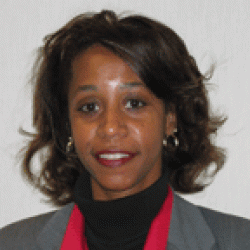When we examine the aftermath of the terrorist attacks of September 11, we know all states are aware of the importance of preparedness for their citizens. Prior to 9-11, states and local communities met to discuss preparedness issues, be they man-made or naturally occurring. These entities continue to meet and have placed a strong emphasis on preparing for man-made events due to bio-terrorist acts in the U.S. and around the world.
The role of public health has increased in the planning, response, and recovery of major events that affect the public. To assist states with preparedness planning, several state-funded programs have evolved. The Centers for Disease Control (CDC) has provided levels of funding to state public health systems, to be granted to local public health agencies so they may equip their staff and infrastructure to be able to protect citizens. Homeland Security efforts also have reached the local level by assisting police, fire, and other emergency responders in preparedness.
Public health is able to further train and equip staff to actively participate in public health emergencies such as anthrax poisoning; small pox infections; and other biological, chemical, and radiation threats to our communities.
A public health emergency may be defined as an event, either natural or man-made, that creates a health risk to the public. Examples of a public health emergency include a natural disaster such as a tornado or flood, a disease outbreak such as influenza or West Nile Virus, a chemical spill, a nuclear attack or accident, or a bio-terrorist event.
During these types of events, public health has a specific role. As an example, during a natural disaster where the public water supply becomes contaminated, public health is responsible for ensuring the drinking water is safe. To accomplish this task, public health provides these services: boil order instructions, testing well and sewer water for contaminants, making arrangements with water trucks to provide drinkable water, and securing portable toilets for elimination needs.
In the case of an influenza outbreak, public health works first from a prevention model, providing staff to educate the public on safe practices so influenza isn’t spread person to person. Your local health department also provides flu vaccinations to vulnerable populations to limit major health complications and fatalities. In the case of food-borne illness, public health investigates food establishments for cleanliness and food handling practices. Victims are personally interviewed to collect and document illness signs and symptoms. This information helps develop case definitions so others suffering from the same infection/contamination can be identified.
Your local health department is the information source in any public health emergency. We work as part of a countywide team with written emergency plans in place to keep you and your family safe. The countywide team consists of your public health department, health care providers, hospitals, emergency services, political figures, the American Red Cross, coroner’s office, mental health crisis teams, and other community agencies planning for your safety.
In the case of a bio-terrorist event, access to vaccinations, equipment, supplies, and medication may be immediately needed. The Peoria City/County Health Department and all central Illinois health departments have a distribution plan in place, as do the state and federal governments through the Strategic National Stockpile (SNS). This public health response ensures all central Illinois citizens are screened and provided with life-saving medications.
Not only does your public health agency plan for a local response, we plan regionally with neighboring counties on how to respond and support each other. As part of our regional collaboration, the Peoria City/County Health Department, along with LaSalle, Putnam, Bureau, Marshall, Tazewell, and Woodford county health departments, kicked off a community education campaign in August to educate citizens about the role of public health in an emergency and to promote family preparedness.
While your local health department is preparing for your safety, here are some activities you can do to help prepare for your family’s safety:
• Develop a water resistent emergency supply kit and keep it in a safe place. Prepare two of these kits: one for home and a mobile kit for your car.
• Know your surroundings, and don’t hesitate to question odd or unusual persons or situations.
• Be alert to suspicious letters and packages at your home, as well as your place of employment.
• Keep a list of emergency contact numbers easily accessible on your refrigerator, kitchen bulletin board, or a similar place.
• Develop a family emergency plan all family members understand and covers issues such as who’s picking up the children, cell phone numbers, and meeting places.
If you’d like more information on preparedness, call the Peoria City/County Health Department at 679-6000. TPW

